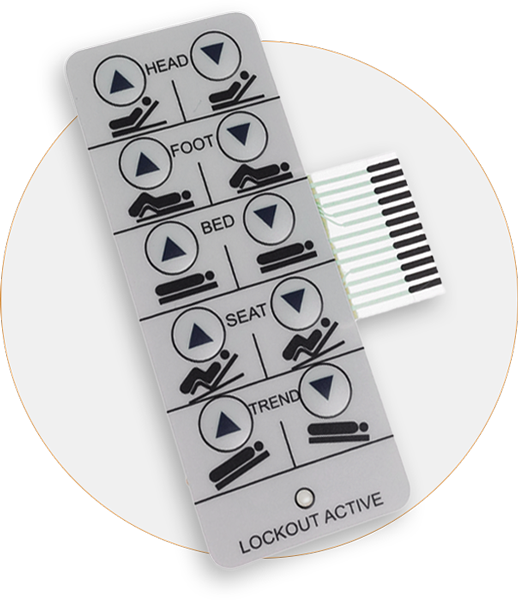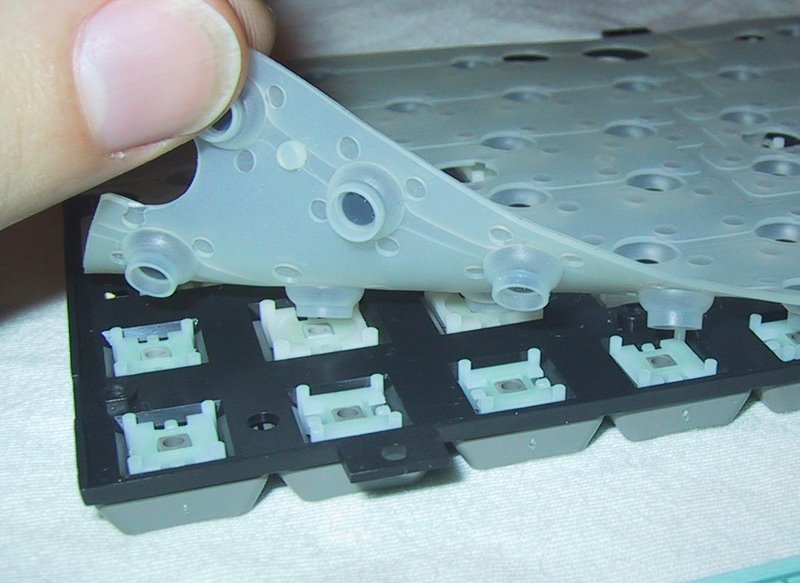Vital Attributes to Try To Find When Selecting a Membrane Switch
Vital Attributes to Try To Find When Selecting a Membrane Switch
Blog Article
Comprehending the Functionality of Membrane Layer Switches for User User Interface Instruments
The functionality of membrane layer changes stands for a considerable improvement in individual interface design, integrating effectiveness with aesthetic versatility. As sectors significantly focus on individual experience, understanding the subtleties of membrane button innovation comes to be essential.
What Are Membrane Switches?
Membrane layer buttons are cutting-edge user interface gadgets that promote user communication with digital equipment. These versatile elements include multiple layers, including a visuals overlay, spacer, and a published circuit layer. The layout permits a seamless assimilation into different digital tools, boosting both the visual and functional elements of customer interfaces.
Membrane switches are typically used in a variety of applications, from household devices to industrial equipment and medical gadgets. Their building and construction commonly features a slim profile, making them an excellent selection for portable designs. The responsive comments provided by these switches can be engineered to satisfy details individual preferences, guaranteeing efficient interaction in between the customer and the gadget.
Longevity is one more substantial advantage of membrane layer switches, as they are immune to dust, dampness, and chemicals, which enhances their life-span popular environments. Additionally, these buttons can be tailored in terms of shape, dimension, and graphic layout, permitting branding and user-specific functions. Generally, membrane switches over represent a functional remedy for improving user experience in digital tools, incorporating performance with visual charm in a reliable manner.
How Membrane Switches Over Job
Operating on a straightforward principle, membrane switches over utilize a split construction to sign up individual input effectively. Each switch consists of several layers, including a published circuit layer, a spacer layer, and a top graphic layer, which are created to collaborate effortlessly. When an individual presses the top layer, it presses the spacer layer, bringing the conductive elements of the circuit layer right into call with each various other.
This call develops a shut circuit, signifying the gadget to implement a particular feature. The layout permits various setups, including tactile feedback, which can improve the customer experience by offering a physical feeling upon activation. The materials utilized in membrane buttons often include flexible substrates, such as polyester or polycarbonate, which guarantee sturdiness and strength versus damage.

Secret Benefits of Membrane Layer Switches

An additional substantial advantage is their compactness. Membrane layer switches are slim and light-weight, which allows makers to conserve room in their gadgets without sacrificing capability. This function is particularly valuable in applications where weight and volume are crucial factors to consider.
Furthermore, membrane layer switches are resistant to dirt, wetness, and chemicals, enhancing their resilience. This strength expands their life expectancy and lowers the need for constant replacements, leading to expense savings with time.
Additionally, the tactile comments supplied by membrane switches can be enhanced to improve customer interaction. They can include attributes such as elevated buttons or audible clicks, improving functionality and customer experience.
Applications Throughout Industries
User interface gadgets using membrane layer switches are common in a wide variety of sectors, showcasing their adaptability and performance. Membrane Switch. In the clinical check this sector, membrane switches are indispensable to devices such as diagnostic devices and individual surveillance systems, where their toughness and simplicity of cleaning are vital for keeping hygiene requirements. In the auto sector, these buttons are used in dashboard controls and infotainment systems, supplying a smooth and contemporary user interface for users.
Furthermore, the consumer electronic devices field gain from membrane switches in home appliances and handheld devices, where compact design and user-friendly interfaces boost customer experience. Industrial applications also utilize membrane layer switches over for control board in machinery and automation systems, Resources stressing their effectiveness and resistance to rough atmospheres.
In the aerospace and defense industries, membrane switches are used in cabin controls and devices, where reliability and efficiency under severe problems are vital. In addition, the pc gaming market significantly integrates membrane buttons in controllers and game machines, adding to an appealing user experience. Overall, the versatility of membrane layer switches Look At This allows their widespread use throughout various industries, underscoring their significance in contemporary user interface layout.
Future Trends in Membrane Layer Switch Technology

Furthermore, making use of advanced materials, such as polycarbonate and polyester films, is expected to increase, giving enhanced toughness and resistance to ecological stress factors. These materials add to the overall durability of membrane layer switches, making them ideal for harsher commercial applications.
Moreover, the consolidation of wise modern technology, consisting of IoT connection, will certainly allow membrane buttons to connect with various other gadgets and systems, helping with a much more interactive individual experience. This trend straightens with the expanding demand for clever devices across numerous fields, from health care to customer electronic devices.
Finally, modification options are expected to increase, enabling producers to develop bespoke remedies tailored to specific individual needs and choices. These developments will position membrane buttons as vital elements in the evolution of interface technology.
Verdict
In verdict, membrane changes stand for a critical innovation in user interface modern technology, offering a trustworthy and versatile service for varied digital applications. As developments in product scientific research and touch noticing technologies proceed, the capability and applicability of membrane layer switches are expected to increase, reinforcing their relevance in modern-day electronic tools.
Report this page